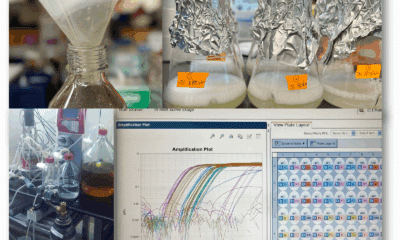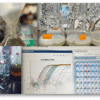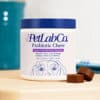Advancement in Cancer Research with Mr. Victor Jonathan: Nature and Innovation Converge
In the relentless pursuit of effective cancer treatments, scientists are increasingly turning to nature’s playbook for inspiration. Mr. Victor Jonathan, a US-based researcher is working on the total enantioselective synthesis of Hamigeromycin B—a rare fungal compound with potent anti-cancer potential. This breakthrough, detailed in his research presentations and publications, replicates the molecule’s natural structure in the lab with precise stereochemical control, opening doors for further testing and development. Hamigeromycin B, isolated from the fungus *Hamigera avellanea*, belongs to the resorcylic acid lactone (RAL) family, known for disrupting key cancer pathways. Mr. Jonathan’s work not only overcomes the challenges of sourcing this scarce natural product but also paves the way for creating analogs that could enhance its therapeutic profile. As cancer remains a leading cause of death worldwide, innovations like this highlight the promise of bridging natural compounds with synthetic chemistry.
Nature-Inspired Molecules
Nature has long been a treasure trove for drug discovery, providing the blueprint for over half of all approved pharmaceuticals, particularly in oncology. From the Pacific yew tree’s paclitaxel (Taxol), which revolutionized breast and ovarian cancer treatment, to marine sponge-derived eribulin for metastatic breast cancer, natural products offer complex molecular scaffolds that synthetic chemists strive to mimic or improve. These compounds often target multiple biological pathways, reducing the likelihood of resistance that plagues single-target drugs. In recent years, advances in semisynthesis—modifying natural molecules—have yielded potent agents like vinca alkaloids and curcuminoids, which exhibit strong antitumor effects by interfering with cell division and inflammation. Microbial metabolites, such as those from fungi and bacteria, are particularly fruitful, inspiring therapies that reprogram immune responses or directly attack cancer cells. Mr. Jonathan’s synthesis of Hamigeromycin B exemplifies this approach, transforming a fungal metabolite into a lab-accessible candidate that could join the ranks of nature-inspired anticancer drugs. By harnessing computational design and stereoselective methods, such efforts accelerate the transition from natural discovery to clinical application, addressing the scarcity and variability of wild-sourced compounds.
Resorcylic Acid Lactones as Promising Drug Candidates
Resorcylic acid lactones (RALs) are a class of fungal secondary metabolites featuring a β-resorcylic acid core fused to a macrolactone ring, renowned for their diverse bioactivities including anticancer effects. Compounds like radicicol and hypothemycin have shown promise in preclinical studies by inhibiting heat shock proteins and kinases critical to tumor survival. Hamigeromycin B, a 14-membered RAL, stands out for its ability to modulate signal transduction in kinases such as JNK3, EGFR, and HSP90, potentially halting cancer progression. Recent discoveries of novel RALs, such as penicimenolides from Penicillium species, have demonstrated potent cytotoxicity against cell lines like U937 and MCF-7, rivaling established drugs like Taxol. These lactones also exhibit anti-inflammatory properties by suppressing pro-inflammatory cytokines, which could mitigate cancer-associated inflammation. Jonathan’s enantioselective synthesis—employing strategies like chiral catalysis and ring-closing metathesis—ensures the production of the active enantiomer, overcoming natural scarcity and enabling structure-activity studies for optimized analogs. With RALs showing broad-spectrum activity against parasites, bacteria, and viruses alongside cancer, they represent a versatile scaffold for multitargeted therapies. Ongoing research into their mechanisms, including covalent inhibition of enzymes, positions RALs as front runners in next-generation drug development.
HSP90 as a Viable Enzyme Target
Heat Shock Protein 90 (HSP90) is a molecular chaperone that stabilizes oncogenic proteins involved in cell proliferation, survival, and metastasis, making it overexpressed in many cancers. By inhibiting HSP90, therapies can simultaneously degrade multiple client proteins, offering a broader attack than single-pathway drugs and potentially overcoming resistance. Natural HSP90 inhibitors like geldanamycin and its derivative 17-AAG have entered clinical trials, demonstrating antitumor activity in breast, lung, and prostate cancers. RALs, including Hamigeromycin B, bind to HSP90’s ATP pocket, disrupting its function and inducing apoptosis in tumor cells. Recent advances include over 20 HSP90 inhibitors in trials, with combinations enhancing efficacy in gastrointestinal and colorectal cancers. Jonathan’s pure enantiomer of Hamigeromycin B could refine this targeting, minimize off-target effects and improve bioavailability. As HSP90’s role in stress response makes tumors dependent on it, inhibitors like this hold promise for personalized medicine, especially in HSP90-overexpressing malignancies.
How Does This Work Advance Cancer Research
Victor Jonathan’s total enantioselective synthesis of Hamigeromycin B marks a significant leap in cancer research by enabling scalable production and analog development through synthetic chemistry. This approach addresses the limitations of natural extraction, allowing rigorous biological testing and structure optimization for enhanced potency. By integrating chiral synthesis techniques, it facilitates the study of stereospecific interactions with targets like HSP90, potentially leading to more effective, less toxic drugs. Advances in synthetic lethality—exploiting cancer-specific vulnerabilities—could be bolstered by such molecules, as seen in recent inhibitors targeting DNA damage response pathways. Furthermore, this work aligns with emerging strategies like on-site drug synthesis in tumors and nanoparticle delivery, enhancing targeted therapy precision. In broader terms, it contributes to the chemical biology toolkit, bridging fundamental research with clinical applications and accelerating the discovery of novel anticancer agents. As synthetic biology reprograms cells for therapy, Jonathan’s innovation could inspire hybrid approaches, ultimately improving outcomes for patients battling resistant cancers.
Victor Jonathan’s pioneering synthesis underscores the power of synthetic chemistry in unlocking nature’s secrets for cancer treatment. As Hamigeromycin B progresses toward availability and pre-clinical in vitro evaluation, it represents hope for more accessible, effective therapies in the ongoing fight against cancer.
















